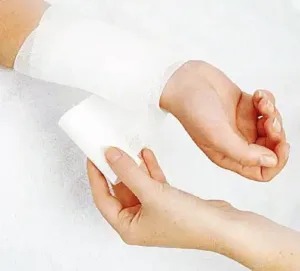To successfully complete any first aid and CPR course participants must be able to demonstrate and have the skills to complete a scene assessment. The material posted on this page is for information purposes only. To learn proper techniques for CPR and AED use or for scene assessments take a first aid and CPR course. The scene assessment provides vital information to the rescuer. Major component of the scene assessment include:
- Assess the scene for hazards.
- Determine the mechanism of injury.
- Record the number of victims.
Rescuers should have a good understanding of whether emergency medical services (EMS) will be required after completing a scene assessment. If a rescuer is in any doubt EMS should be contacted. This page will focus on the 3 sections mentioned above which make up the scene assessment. The scene assessment is the first component rescuers do when coming into a emergency scenario that might require first aid and / or CPR.
Hazards:
A vital component of first aid and CPR is for rescuers to check the scene to ensure that it is safe for the rescuer and for the patient. Common questions for the rescuer to ask him or herself include:
- Are electrical wires down or present?
- Do I smell or see any toxic or unusual gas?
- Is there a risk of a fire or explosion?
- Are there any broken glass?
A popular rhyme for remembering to check different hazards is “fire, wire, gas and glass” which has been made famous by St Mark James water safety instructors. If hazards are present rescuers may need to make a decision of whether to move the victim from the hazards to a safe environment or if the hazards can be dealt with quickly. Rescuers should not proceed with the patient assessment if the hazards pose a threat to the rescuer or the patient.
Mechanism of Injury:

Rescuers must understand that many life threatening injuries are not easily determined or apparent. The rescuers should look for mechanism of injuries to help predict the underlying symptoms. Rescuers should ask questions such as:
- What happened?
- What part of the body did you hurt or fall on?
- Where did you fall? What did you fall on?
Answers to these questions can help rescuers determine what is causing the symptoms and the injuries the patient could have possibly sustained. Rescuers will need to make assessments on the level of injury and the possibility of serious internal organ injury which may be required for rapid transport to the hospital.
Additional Considerations for mechanisms of Injuries that require transport to hospital:
- A fall from a height of greater than 6.5 meters.
- High speed accidents.
- Pedestrian, motorcyclist or cyclist struck at a speed greater than 30kph.
- Poisoning.
- Near drowning.
- Electrical injuries.
- Decompression injuries.
Number of Victims:
The final step to the scene assessment is determining the number of victims. If the rescuer see’s more than one victim with serious injuries then he or she should get help immediately rather than try to do it all. It is extremely difficult to manage more than one critical patient at a time. Rescuers should focus on getting all the patients with critical injuries managed and transported to the hospital. Rescuers may be required to to prioritize victims when multiple casualties are present.
The scene assessment is the first and one of the most crucial steps in CPR and first aid. Decisions made in the scene assessment can be critical to the outcome of the scenario and the victims. By taking a first aid and or CPR and AED course rescuers will learn how to complete scene assessments.
Registration for CPR and AED Programs with Scene Assessments:
A good scene assessment is a crucial component in CPR and AED training. Candidates enrolled with our premier St Mark James providers will learn about the above mentioned components. Our providers are located conveniently throughout Canada and offer a range of first aid and CPR programs. A list of our providers can be found on our locations page or you can select your location from one of the menu’s. Our training partners feature CPR and AED courses in Winnipeg, Vancouver, Regina, Saskatoon, Kelowna, Victoria, Calgary, Red Deer, Edmonton, Toronto, Hamilton, Mississauga, Halifax and Thunder Bay. Visit a St Mark James training provider in your region for more information.
